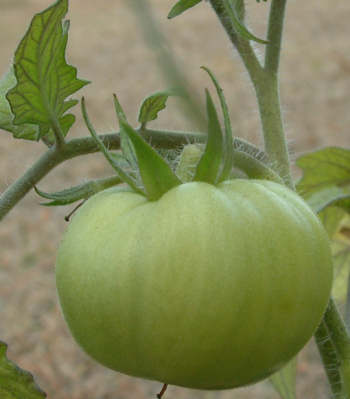Tomato Varieties for the Southeast
Tomato varieties for the Southeastern USA are pretty wide-open for most locations, but there are certain considerations. I thought I’d start some posts about tomato varieties well-suited for different locations around the USA. And this, my first post, is on the Southeastern USA.
What is the South East?
Well, here are the boundaries I’m considering the Southeast:
- South of Virginia on the eastern seaboard
- East of Texas
- South of Kentucky in the middle part of the USA.
- I’ll include Arkansas, but exclude Missouri.
So now that we know the boundaries, what tomato varieties are good for this area? Let’s consider the two things common to Summer in most of these locations.
Heat. Humidity.
While a little of both are great for growing tomatoes, too much of a good thing spells bad news for your eventual fruits. So what kind of problems do the heat and humidity cause in the Southeastern USA?
Yikes! There’s a Fungus Among Us!
Unfortunately, fungus thrives in humid locations without good air circulation. Diseases related to fungal infections include alternaria, blights, gray leaf spot, fusarium wilt, damping off, verticillium wilt, mold….you get the idea.
If you are finding a lot of fungal infections in your plants, you’ll want to at least think about some hybrid tomato varieties that are more resistant to these problems. You’ll recognize them by the letters after the tomato name; they include:
- A – alternaria
- F – fusarium wilt strain I
- FF – fusarium wilt strain I & II
- V – verticillium wilt
So for example, if you look at the description for the tomato variety called Big Beef, you’ll see the letters VF1F2TNA, which means the tomato is resistant to alternaria, both strain 1 and 2 of fusarium wilt, verticillium wilt, tobacco mosaic virus (the “T”) and nematodes (the “N”).
Other hybrid tomato varieties with good fungal resistance include:
- Applause (ASCF1F2StV)
- Celebrity (VF1F2NTASt)Â (one of my favorite hybrids)
- Country Taste (F1F2TV)
- Fabulous (VF1F2TASt)
- Razzleberry (VF1F2)
So this gives you an idea of what to look at when evaluating one of the tomato hybrids. (In addition to taste, of course.)
Other Tomato Diseases
Unfortunately, fungal diseases aren’t the only ones to threaten our homegrown tomatoes. We also have to worry about bacterial diseases (bacterial speck, spot, wilk, canker, fruit rot, etc.). And if that wasn’t bad enough, we have nematodes and viral diseases. It’s a wonder that we have any tomatoes at all!
The chances of bacterial diseases can be greatly reduced by careful mulching, as it’s the bacteria in the soil that causes problems. Nematodes…well, if you have them in the soil, the best thoughts would be to either plant your tomatoes in containers (using potting soil) and/or plant hybrids that are resistant to nematodes. Viral diseases can also be present – yikes!
(You may want to read the post on tomato diseases to become more familiar with these banes to growing tomatoes.)
What About Heirloom Tomatoes?
Sure, you can grow heirlooms! Just keep in mind that because they since they don’t have all those extra letters after their name, you’ll not know right off the bat what kind of resistance a variety has. You’ll need to be more on the lookout for any problems. Make sure your plants have plenty of air circulation (without being too windy), mulch the soil and consider growing in containers if you have a problem with nematodes. Oh, and don’t splash water on the plants when watering.
If you live in a location where it’s hot but not necessarily humid, you have more wiggle room in the summer. But of it’s really hot, you’ll want to pick tomato varieties that set fruits when many days go well over 90 degrees. The big beefsteaks are usually a little more trouble in this respect, compared to the tomatoes which grow to be less than 8 ounces.
Heirlooms that seem to do well in the southeast heat and humidity are:
- Cherokee Purple
- Black Krim
- Black Prince
- Bradley
- Clear Pink Early
- Matina
- Just about any cherry tomato
Where I live in South Florida, I try to grow most of my heirloom tomatoes on the “shoulders” of the season. In other words, I do my best to avoid having the fruit trying to set between mid-July and mid-August, when it’s the hottest. This may mean starting the seeds earlier than normal so I can get the seedling plants outside at the first possible moment.

Leave a Reply